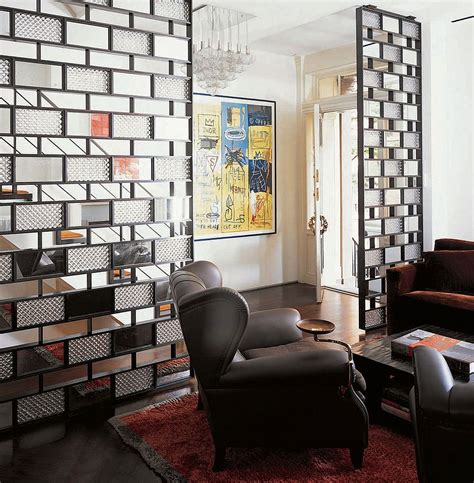A well-partitioned living room can create a sense of flow and cohesiveness while catering to different activities and creating distinct zones. Here’s a comprehensive guide to partitioning your living room effectively:

1. Define Your Needs and Goals
Before you start partitioning, it’s essential to determine your specific needs and motivations. Consider the following:
- How do you typically use your living room?
- What activities do you want to accommodate?
- What kind of ambiance do you want to create?
2. Consider Furniture Placement
Furniture arrangement plays a crucial role in creating functional and visually appealing partitions. Experiment with different layouts to determine what works best for your space.
- Use Large Furniture Pieces: Sofas, armchairs, and ottomans can be used to define boundaries between different zones.
- Position Furniture Strategically: Place furniture pieces parallel or perpendicular to each other to create visual separation.
3. Incorporate Screens and Curtains
Screens and curtains are versatile and cost-effective solutions for partitioning a living room.
- Folding Screens: Freestanding folding screens provide privacy and create a sense of division. They come in various materials, from wood to fabric.
- Curtains: Floor-to-ceiling curtains can be drawn to separate sections of the living room or used as a backdrop for a focal point.
4. Use Rugs to Divide Space
Rugs can visually define different areas in the living room. Use different colors, textures, and patterns to create distinct zones.
- Layering Rugs: Layer overlapping rugs to create a sense of depth and separation.
- Use Area Rugs: Large area rugs can anchor a particular zone and delineate its boundaries.
5. Create Built-In Partitions
Built-in partitions offer a more permanent solution for dividing the living room.
- Bookcases and Shelves: Built-in bookcases and shelves can be used to create a semi-permeable barrier between different areas.
- Walls and Arches: If you have the space and budget, consider constructing a wall or an archway to separate the living room into distinct zones.
6. Enhance with Lighting
Lighting can play a significant role in partitioning a living room and creating different moods.
- Directional Lighting: Use spotlights or table lamps to highlight specific areas and draw attention to focal points.
- Ambient Lighting: General overhead lighting can be used to create a sense of overall illumination and cohesion.
7. Add Greenery
Indoor plants and greenery can bring life and vitality to a partitioned living room.
- Corner Plants: Place large plants in corners to create a sense of separation.
- Hanging Plants: Suspended plants add a vertical element and create the illusion of height.
Common Mistakes to Avoid
- Overpartitioning: Avoid creating too many small, cluttered zones by overpartitioning your living room.
- Ignoring Flow: Ensure that the flow of movement between different zones is seamless and intuitive.
- Cluttering Partitions: Keep partitions free of clutter and unnecessary objects to maintain a sense of spaciousness and visual appeal.
Pros and Cons
Pros:
- Increased functionality and organization
- Creates distinct zones for different activities
- Enhances visual appeal and ambiance
- Can improve privacy and acoustics
Cons:
- May reduce the perceived size of the living room
- Can be expensive to implement, especially for built-in partitions
- May require some adjustments to furniture placement
Conclusion
Partitioning a living room can transform its functionality and style. By following these guidelines and considering your specific needs, you can create a space that meets your requirements, enhances your comfort, and reflects your personal taste.
